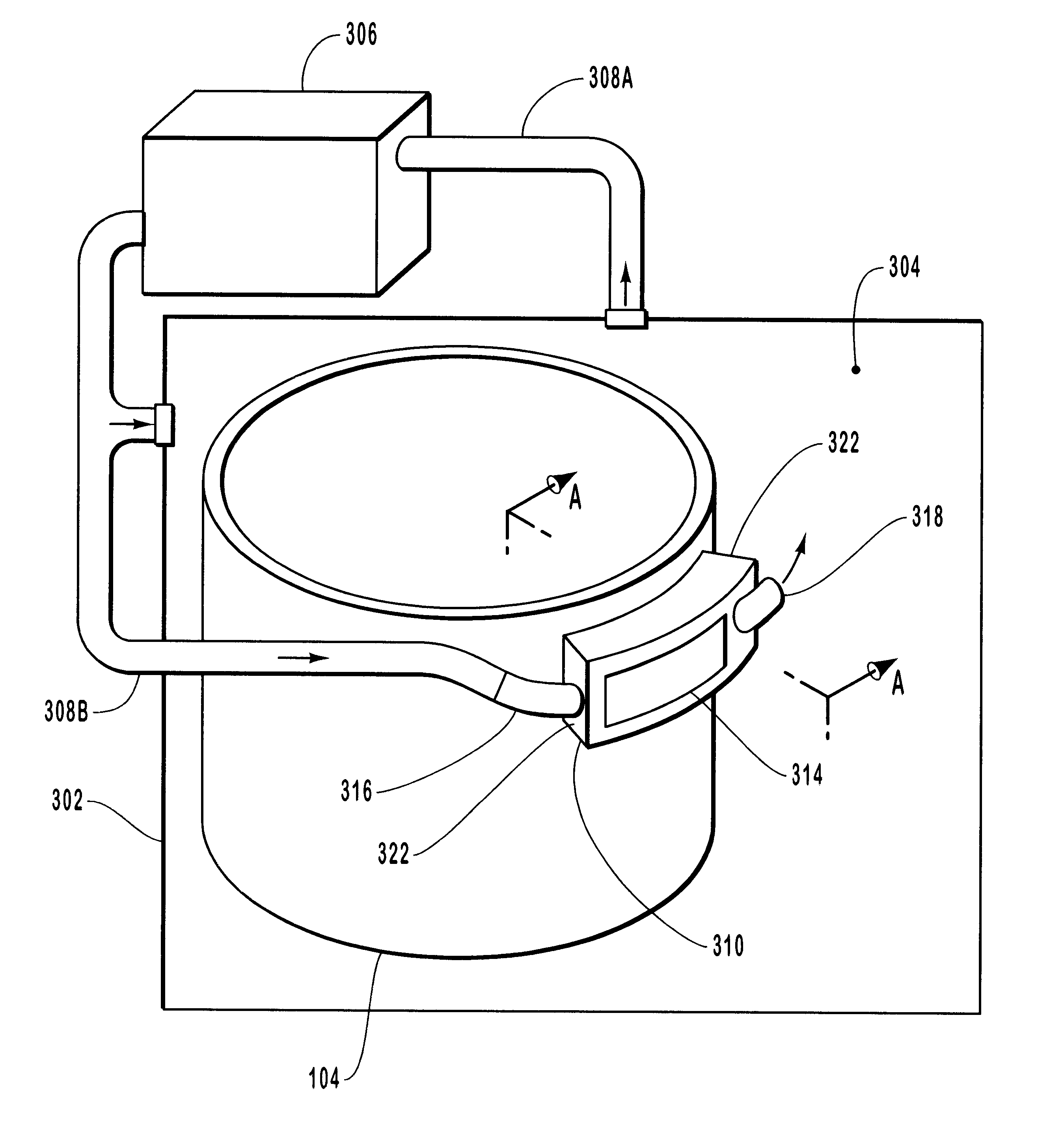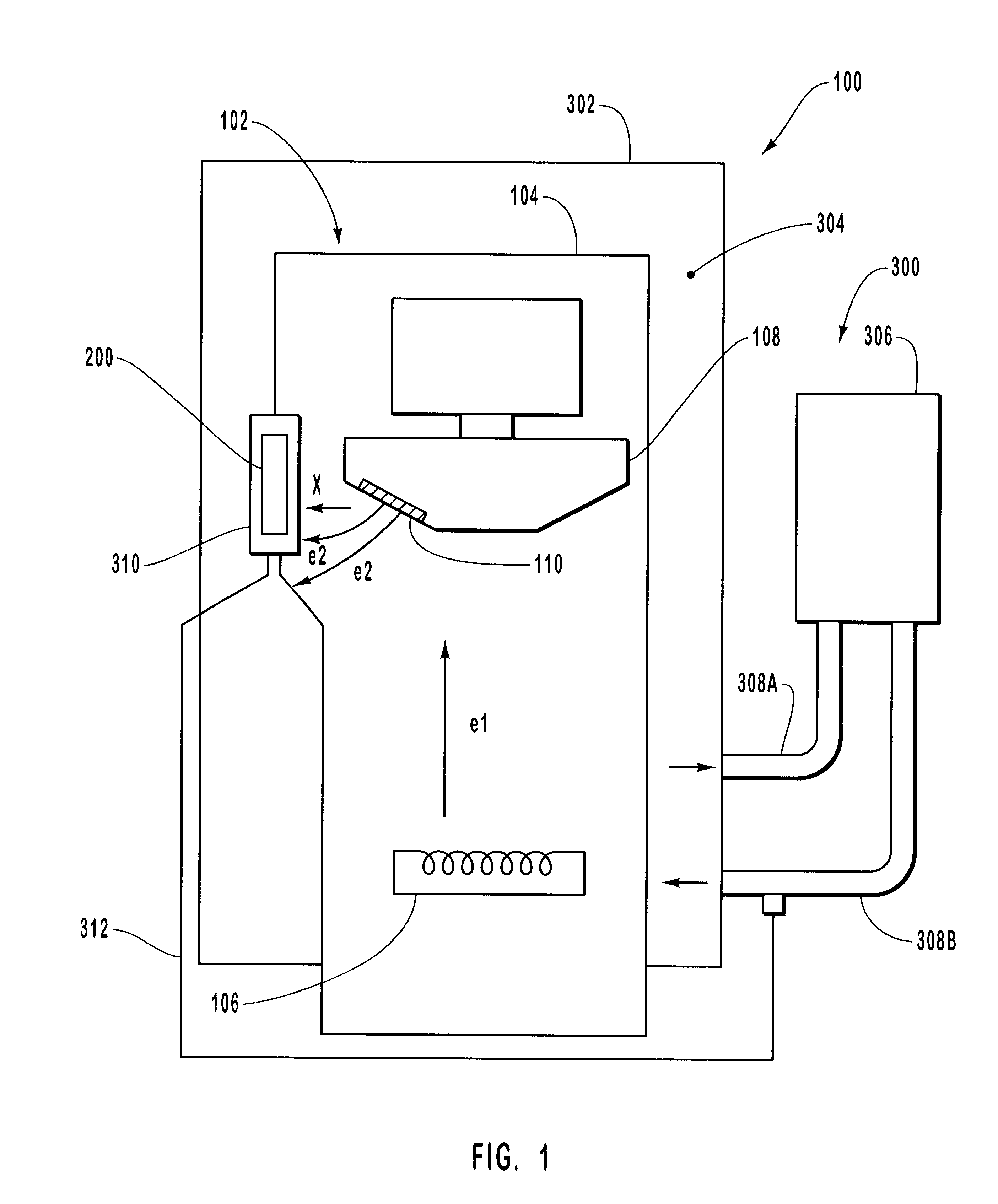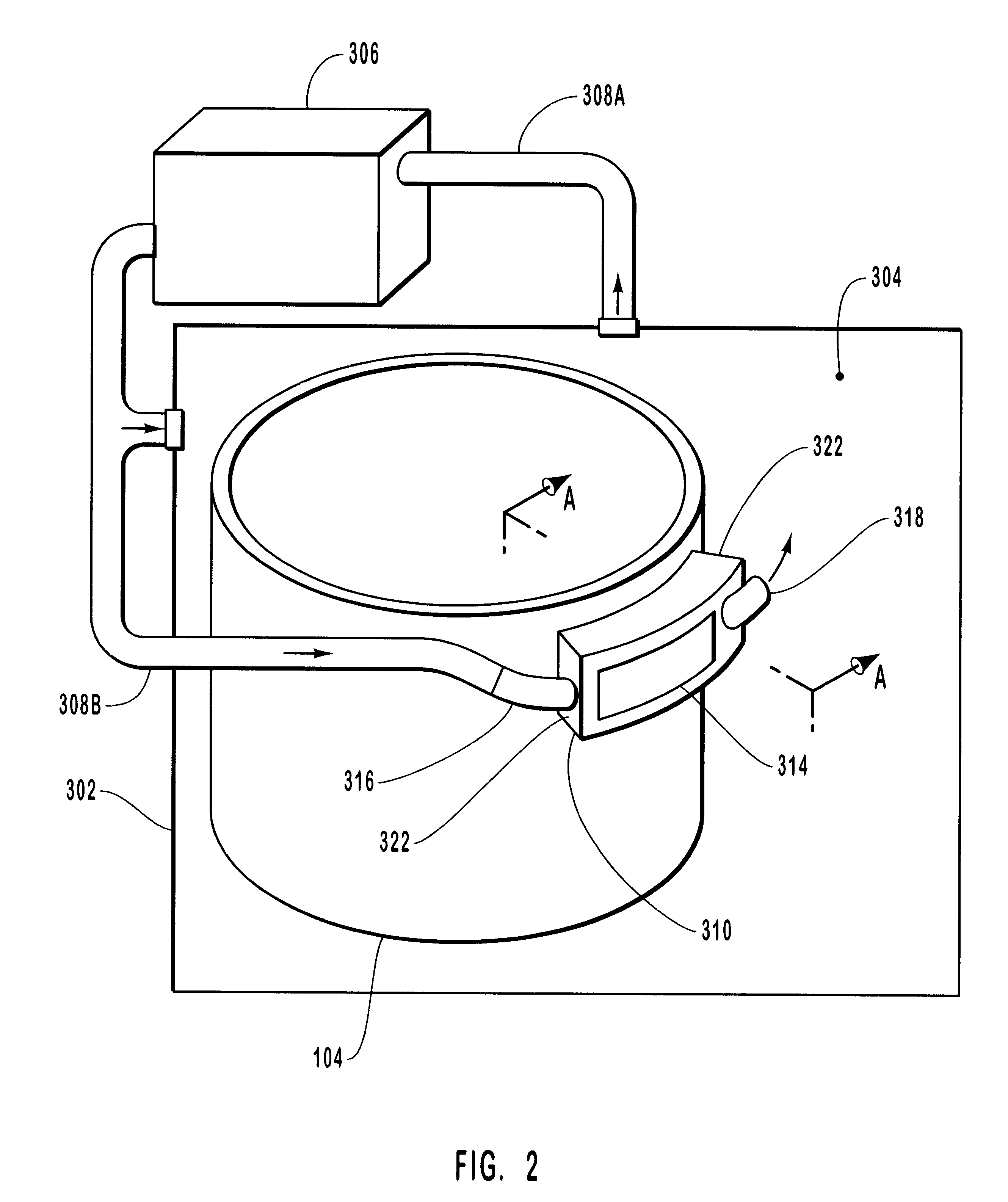Large surface area x-ray tube window and window cooling plenum
a technology of x-ray tube and cooling plenum, which is applied in the field of large surface area x-ray tube window and window cooling plenum, can solve the problems of reducing the service life of x-ray tube components, generating significant amount of heat, and destroying x-ray tubes, and achieving the effect of effectively and efficiently removing excessive heat from x-ray tube components
- Summary
- Abstract
- Description
- Claims
- Application Information
AI Technical Summary
Benefits of technology
Problems solved by technology
Method used
Image
Examples
Embodiment Construction
Reference will now be made to figures wherein like structures will be provided with like reference designations. It is to be understood that the drawings are diagrammatic and schematic representations of various embodiments of the invention, and are not to be construed as limiting the present invention, nor are the drawings necessarily drawn to scale.
In general, the present invention relates to cooling systems for use in any type of x-ray tube environment requiring improved cooling. FIGS. 1 through 7 indicate various embodiments of a cooling system conforming to the teachings of the invention.
Reference is first made to FIG. 1, which depicts an x-ray device indicated generally at 100. X-ray device 100 includes an x-ray tube 102 having a vacuum enclosure 104, inside of which are disposed an electron source 106 and a target anode 108. In operation, power is applied to electron source 106, which causes a beam of electrons e1 to be emitted by thermionic emission. A potential difference i...
PUM
 Login to View More
Login to View More Abstract
Description
Claims
Application Information
 Login to View More
Login to View More - R&D
- Intellectual Property
- Life Sciences
- Materials
- Tech Scout
- Unparalleled Data Quality
- Higher Quality Content
- 60% Fewer Hallucinations
Browse by: Latest US Patents, China's latest patents, Technical Efficacy Thesaurus, Application Domain, Technology Topic, Popular Technical Reports.
© 2025 PatSnap. All rights reserved.Legal|Privacy policy|Modern Slavery Act Transparency Statement|Sitemap|About US| Contact US: help@patsnap.com



